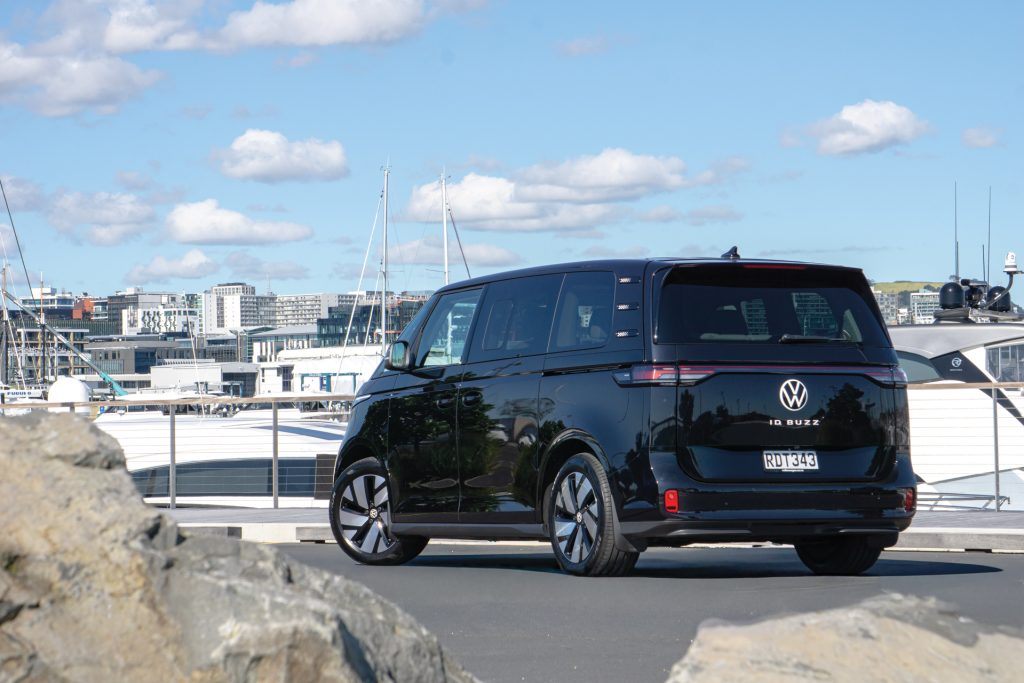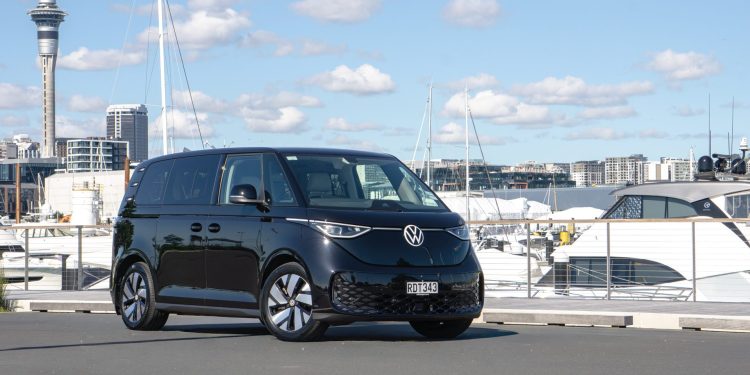2025 Volkswagen ID.Buzz NWB Review
Words: Kyle Cassidy | Photos: KC
The ID. Buzz has been a long time coming. VW revealed several concepts over the past twenty years hinting at a Type 2 revival while the Buzz design study of 2017 finally became the new ID. So much hype, such a long wait. And that’s especially the case here in NZ where it has turned up two years after launching in Europe. Has VW missed the bus, so to speak? Sales have been slow globally thanks to a price tag that puts people off. It’s in premium territory here, starting at $129,990 for this NWB version. That’s Normal Wheelbase, as opposed to the longer LWB variant, which costs another $10k. Then there’s the GTX with its $150k price tag.
Pricing will keep it exclusive, which is part of the premium ethos. Some might argue it’s worth it for the look. People do like it, even in black, probably the worst colour for it. Those cool two-tone hues are $5200 extra though. Typical.
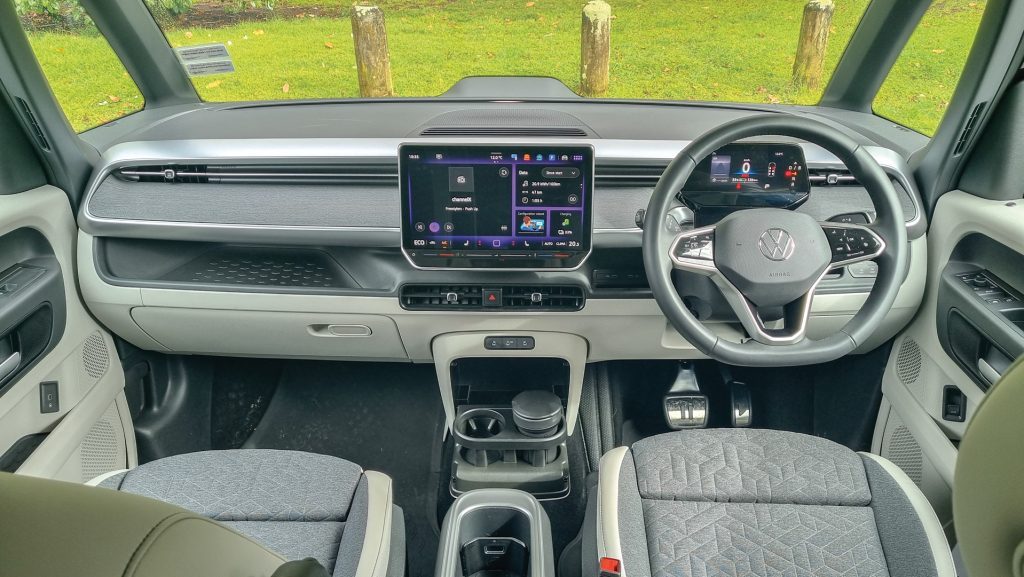
Practical obviously
Electric sliding side doors are a must on a van, and with myriad ways to open and close them (remotely off the key fob, buttons in the forward cabin, two more in the rear and the outside handle too) they make this MPV oh-so accessible. While the Buzz is quite wide at 1985mm across, these sliding doors ease entry when berthed in tight car parks.
To the seating then. The usual set-up of the NWB is a three-across bench in the back, and masses of cargo space in behind (over 1100L). There is a $2400 option to have a six-seat layout, as seen here, with two separate chairs in the middle and a two-person bench in behind. This gives the four passengers in the rear ample room with easy movement around the cabin too. The middle pews can slide and recline for added comfort. Everyone has their space, everyone is happy.
But then there’s not much room for the luggage behind those rear seats. Split 50/50, these can be folded down if not in use, though they don’t disappear into the floor, so there’s a stepped cargo space. They can also be removed altogether. The latter is an easy procedure and although they are quite heavy, they are simple to reinstate. Still the juggling of passengers and cargo space is going to be a constant. It’s probably better to stick with the five-seat option for the NWB, and move to the bigger LWB if you need more seats.
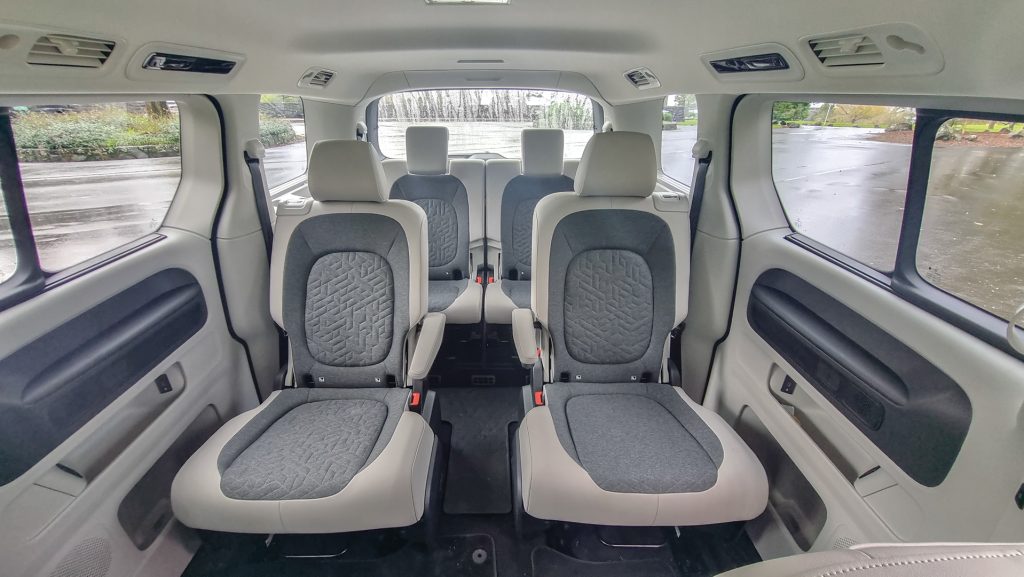
Van-like up front
You climb up into the pilot’s perch, the driving position more van-like than SUV, and it takes a few attempts to find the right seat height and wheel setting. There’s a commanding view out however. The seats are trimmed in faux leather and recycled textiles, and are comfy in all six spots around the van. We like the interior tones; light and bright, while the grey seat inserts add practicality. Up front, they are heated and throw in a massage too. We like a heated wheel. At least for half the year. The cabin construction is typical Volkswagen solid but there are lots of hard plastics about.
Buttons are few and far between, everything done via the touchscreen, which is an okay operator. There are haptic buttons on the wheel, and these work well enough too. Nothing caused frustration in an everyday sense. Android Auto and CarPlay feature, which you’ll need for sat nav as that’s not part of the deal. There’s one inductive charger and four USB-C ports, two in the front, and two in the rear, which isn’t enough really.
Storage spots aren’t exactly abundant, and those present are a bit tight. Even those in the Buzz box, a removable centre console thingee. Why would you want to remove it? Not sure, maybe so you too can use the sliding doors to exit through, as without the box, you can move to the rear cabin easily.
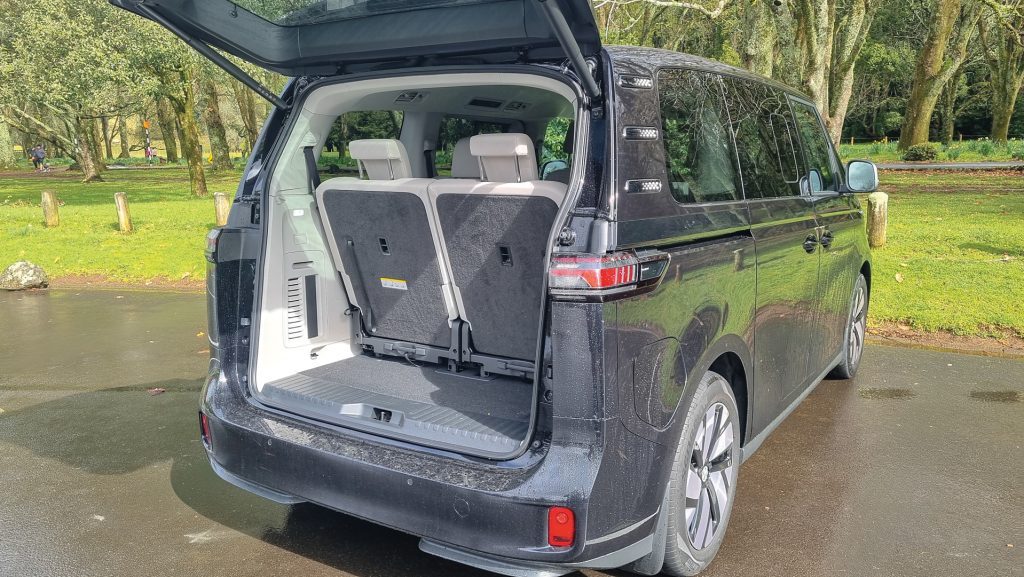
On the charge
This NWB has a single 210kW/560Nm motor on the rear axle, drawing energy from a 79kWh NCM battery. Range they quote as 382km. And with a long term energy consumption figure of 22.6kWh/100km, 350km will be your realistic touring ability. Not a lot for $130k. You’ll likely need a wall box at home to help keep this charged. There is no V2L facility, but they do throw in a couple of charge cables.
We doubt you’ll require the extra go of the dual-motor GTX, as this has sufficient urge. The torque comes in smoothly, and it gathers pace easily. The steering is aptly assisted, with just enough road feel too. In D, there is no regen when you’re off the throttle, and it’ll coast along for a surprisingly long distance. Twist the steering column gear selector to B, and then a well judged regen is initiated, enough to slow you almost to a halt. This is not as easy to use as a paddle however, so we’d imagine you’d choose either D or B, and stick with it rather than constantly flicking between them.
The ride is calming, the occasional thump from the rear axle aside. We thought it would have had a better turning circle with its rear motor layout. That said, it’s not awful either. The surround view camera should be better at this price.
And it’s the cost that makes this harder to like. VW vans have never been a value offering, it must be said. That leaves the ID. Buzz as a niche machine; a desirable but pricey people mover.
ID. Buzz Pro NWB
$129,990 / 22.5kWh/100km / 0g/km
0-100 km/h 7.8s
Motor 210kW / 560Nm
Battery/range 79kWh / 382km
Drivetrain 1-speed auto / RWD
Weight 2583kg
